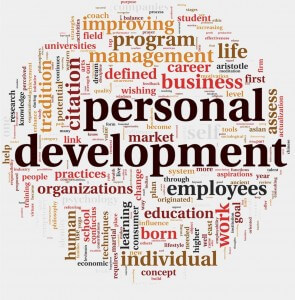
It is relatively easy to test information learned in a classroom or from a book. But can you accurately assess if that knowledge can and will be applied in a practical sense?
While information can be remembered in the short term, its not nearly so simple to determine its application to the real world and its practical value. Quite simply, its effectiveness cannot be measured in the same amount of time.
Information retained in the short term is fine for education; for starters, it connects the dots elsewhere in the coursework. So, it’s fine for the student.
For the employee in training, his training manager, or his supervisor; however, testing information is not enough. Application of that knowledge is important, too. How can we ensure that the people we train apply the information we give them? What may be enough is the subject of this article.
From his article in the Sloan MIT Management Review, Lessons Learned, Harold J. Martin says that some studies suggest “that just 10% to 40% of training is ever used on the job,” and “it is clear that a big chunk of the tens of billions of dollars organizations spend annually on staff development is going down the drain.”
How do we really assess training?
Tests and evaluations are not the total answer, yet that is the way we’ve done business for years. Organizations would love to have a way to guarantee what their employees learn in training can and will be applied on the job. We can’t guarantee it for good reasons too numerous to mention, most having to do with whole of human behavior; however we can try. We know the training process. Once training needs have been assessed, then comes the training, but the real value to the organization is the training assessment; it is the result we have all been waiting for. I’m not just talking about the evaluation of training that employees fill out after the training either, although it does have some value. Is it a question of measurement? Can the amount of information learned be measured? Yes, in the short term. A simple test. Enough? No. Practical application? Not really, but we can help.
How can we measure or ensure the actual amount of learning that takes place can be applied?

It’s easy to say in an evaluation form just what the company trainer wants to hear. It’s called “experimenter bias” in psychology. It simply means people have a tendency to give you what you want, rather than the honest answer. Not that they are lying, but they may honestly believe they have assimilated the information and can apply it. Especially after you have reminded them of the company training objectives time and time again throughout the training.
Now look at those objectives and the messages it sends to the trainees. It says the obvious: “This is what I (or we) hope to accomplish today or this week.” It also says, “This is what is expected of me.” Or, “Let’s just get on with it. I’ll give the instructor or trainer what they expect and I won’t have to elaborate.” Maybe, “I don’t understand this. I don’t dare tell anyone because I’ll lose my job or be demoted, so I’ll just say everything’s fine.”
This is the unspoken back story, if you will, of an employee who needs this training and has to succeed. Left to him or her, he or she will indeed succeed, regardless of what you do as the trainer. It may not be a conscious thought on the trainee’s part, but it is a part of the complex brain function we all have that evaluates and uses all the information we receive, and does with it what is best for us. Hide it, ignore it, or express it.

Martin also says, “Chalk some of it up to human nature: Training involves change, and change creates anxiety that people seek to avoid. In other cases, old habits and workplace pressures can break down even the strongest resolve to use newly acquired skills and knowledge.”
He recommends some simple activities that can significantly increase the amount of learning that is transferred to the workplace. Here’s the snapshot:
- Write down how the information will be applied
- Measure results
- Hold peer meetings
- Ensure supportive superiors
- Provide employee access to experts
He also says, “Based on the experiences of a large Midwestern manufacturer and an industrial supplier, follow-up doesn’t have to be expensive to be effective. Both companies said their training programs and follow-up activities—which were aimed at workers whose job duties were changing—led to improved productivity, cost savings, higher morale and better communication between trainees and their bosses. One of the companies even attributed a decline in union grievances to its training activities, saying the employees who participated in the program became better managers.”
Those five points are relatively easy to achieve, but employee and management desire has to play a part.
Writing anything down gives it more impact–especially for those that learn by doing more than listening. Writing down how one would apply the training helps commit the idea in a way that is different from memorizing; actors often write down lines as a way of “embedding” the ideas, emotions, and actions contained in those words. Don’t ask me why, but it works.
For me, I play it out mentally if I can’t walk the part. I put myself in the mindset for a moment, visualing how these words fit in the “new” me. It can be the same for a trainee, just a different learning technique. For the worker or trainee, writing down or incorporating what the training has provided into written form does much the same thing. It embeds the training guidance into what is already present in his or her perception of operational knowledge and “memories.”
Measuring results.
We’ve already looked at why a test or training evaluation will not necessarily measure the results of how the worker will be able to apply that training. Here’s an idea I like. Why not an interactive training session given later that seeks to do just that? By discussing and suggesting with peers, the application of the training becomes part of the work culture. Better yet, if it’s not already incorporated into the original training, ensure that a discussion or written exercise, development of a work plan includes practical application visualization as part of it. It may still be necessary to have a follow-up, but the seed is planted. Incorporate the training into the performance evaluation process–a little cold perhaps, but necessary, and the development of a new work plan with the modifications attributed to the training reinforce the importance of the result.
It’s still people-to-people.

I can remember taking a job and being given a book, “This is your Bible. This tells you everything you need to know.” It was my key reference book; the how-to would be up to me. That was the extent of my training. I sought out more information from others, peers, supervisors and other sources to make that “Bible” apply to the job I had to do. It was the equivalent of training and knowing I had to do more to make it work. If trainees come to us with the same goal, perhaps all this would not be necessary.
In training, some employees come expecting to be spoon-fed the information they need–which they get sometimes, depending on the trainer; or they receive lots of interactive activities, which keep them interested in the training information being disseminated. Notice I didn’t say anything about practical training application. Perhaps, when we are talking training development we also add a section of applying this training to the specific job as it pertains to the training needs of the employees. If we are already doing this, maybe we need to be more specific. If individual treatment (coaching or training) is necessary, make plans for that to occur immediately or at a minimum, as soon as possible after training.
Training should include a visualization of how it will fit into, not only the company scheme, but into the worker’s training needs.

This fits in well with another article I wrote called, The Training Needs Assessment Disconnect–a look the process as perceived by the employee. As trainers, we are all concerned that what we say has impact, that it is remembered and is a valuable addition in the work place. We need to remain cognizant that we look at both company and individual needs if we are to have the desired training results. The company is the client, but it will be a much happier client if we achieve results. I try to stay positive in my outlook that employees only want what’s best, but we have to be realistic, they and their families come first when it’s time to crunch. Make the training a success-building arrangement, one that works for both the company and employee–and I don’t think we can go wrong.
For information on how to conduct a needs assessment, check out this link: http://www.dirjournal.com/guides/how-to-conduct-a-training-needs-analysis/
—
For more resources about training, see the Training library.
Keep it simple, keep it basic, remember the people, and the Cave Man way of training. Surviving and thriving is for everyone. Check out more of my Cave Man here, or other perspectives on my website. Please check out my new book, The Cave Man Guide to Training and Development. Happy training.
 Sections of this topic
Sections of this topic















